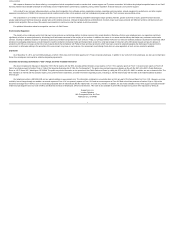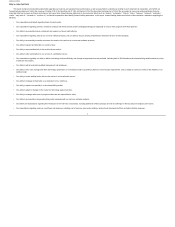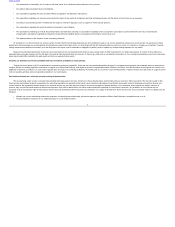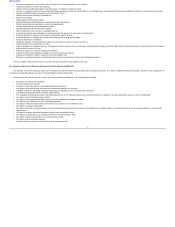Support.com 2014 Annual Report Download - page 18
Download and view the complete annual report
Please find page 18 of the 2014 Support.com annual report below. You can navigate through the pages in the report by either clicking on the pages listed below, or by using the keyword search tool below to find specific information within the annual report.
Table of Contents
• Laws and contractual restrictions may not adequately prevent infringement of our proprietary rights and misappropriation of our technologies or deter others from developing similar technologies; and
• Policing infringement of our patents, trademarks and copyrights, misappropriation of our trade secrets, and unauthorized use of our products is difficult, expensive and time-consuming, and we may be
unable to determine the existence or extent of this infringement or unauthorized use.
Intellectual property litigation is expensive and time-consuming and could divert management’s attention from our business. The outcome of any litigation is uncertain and could significantly impact our financial
results. Also, the laws of other countries in which we market our products may offer little or no protection of our proprietary technologies. Reverse engineering, unauthorized copying or other misappropriation of our
proprietary technologies could enable third parties to benefit from our technologies without paying us for them, which would harm our competitive position and market share.
Our success and ability to compete depend to a significant degree on the protection of our solutions and other proprietary technology. It is possible that:
• We may not be issued patents we may seek to protect our technology;
• Competitors may independently develop similar technologies or design around any of our patents;
• Patents issued to us may not be broad enough to protect our proprietary rights; and
• Our issued patents could be successfully challenged.
We may face intellectual property infringement claims that could be costly to defend and result in our loss of significant rights.
Our business relies on the use and licensing of technology. Other parties may assert intellectual property infringement claims against us or our customers, and our products may infringe the intellectual property
rights of third parties. For example, our products may infringe patents issued to third parties. In addition, as is increasingly common in the technology sector, we may be confronted with the aggressive enforcement of
patents by companies whose primary business activity is to acquire patents for the purpose of offensively asserting them against other companies. From time to time, we have received allegations or claims of
intellectual property infringement, and we may receive more claims in the future. We may also be required to pursue litigation to protect our intellectual property rights or defend against allegations of infringement.
Intellectual property litigation is expensive and time-consuming and could divert management’s attention from our business. The outcome of any litigation is uncertain and could significantly impact our financial results.
If there is a successful claim of infringement, we may be required to develop non-infringing technology or enter into royalty or license agreements, which may not be available on acceptable terms, if at all. Our failure
to develop non-infringing technologies or license proprietary rights on a timely basis would harm our business.
We may face class actions and similar claims that could be costly to defend or settle and result in negative publicity and diversion of management resources.
Our business involves direct sale and licensing of services and software to consumers and small businesses, and we typically include customary indemnification provisions in favor of our partners in our
agreements for the distribution of our services and software. As a result we can be subject to consumer litigation and legal proceedings related to our services and software, including putative class action claims and
similar legal actions. As our employee count grows and consists mostly of hourly (“non-exempt”) employees working from home, we can also be subject to employee litigation and legal proceedings related to our
employment practices attempted on a class or representative basis. Such litigation can be expensive and time-consuming regardless of the merits of any action, and could divert management’s attention from our
business. The cost of defense can be large as can any settlement or judgment in an action. The outcome of any litigation is uncertain and could significantly impact our financial results. Regardless of outcome,
litigation can have an adverse impact on us because of defense costs, negative publicity, diversion of management resources and other factors.
Our long-term success depends, in part, on our ability to expand sales to customers located outside of the United States, and thus our business is susceptible to risks associated with international
sales and operations.
We currently have sales personnel only within the United States but anticipate expanding our international operations. Our international expansion efforts may not be successful. In addition, conducting
international operations subjects us to new risks that we have not generally faced in the United States. These risks include:
17
EDGAR Stream is a copyright of Issuer Direct Corporation, all rights reserved.
























